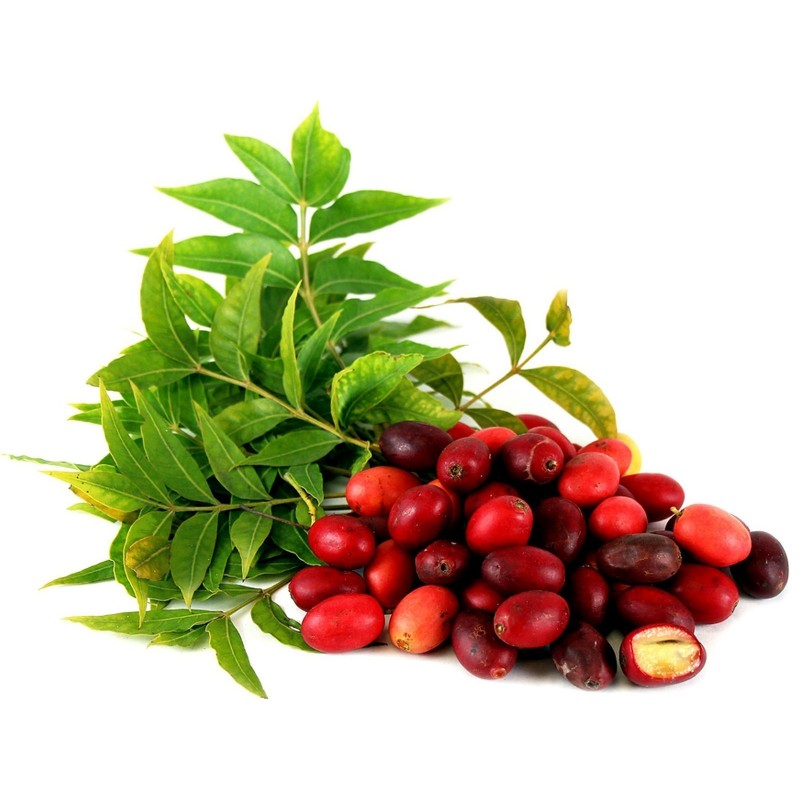






تحتوي شجرة البرقوق Kaffir على مظلة مظللة واسعة ويمكن أن تصل إلى ارتفاعات 15 مترًا. لها أوراق منجلية خضراء داكنة ذات مظهر لامع. قد تكون الورقة الحمراء الغريبة مبعثرة في جميع
تحتوي شجرة البرقوق Kaffir على مظلة مظللة واسعة ويمكن أن تصل إلى ارتفاعات 15 مترًا. لها أوراق منجلية خضراء داكنة ذات مظهر لامع. قد تكون الورقة الحمراء الغريبة مبعثرة في جميع أنحاء أوراق الشجر ، وهو أمر أساسي لتحديدها. أزهار بيضاء تفسح المجال لفقد مجموعات من الفاكهة المستطيلة. يبلغ طولها 3 سم وتظهر لأول مرة باللون الأخضر ولكنها تصبح حمراء زاهية عندما تنضج. يشبه الجزء الداخلي منها مانجو مع لحم برتقالي خوخي يحيط ببذرة كبيرة. تحتوي الثمرة على ملمس مخملي ناعم وحموضة لاذعة متوازنة مع المكونات الكريمية من المانجو وفاكهة العاطفة. في حين أن هناك نسبة صغيرة من الفاكهة إلى البذور ، فإن الجلد يبتعد بسهولة عن اللحم ، مما يجعل التحضير سريعًا.
ينضج خوخ الكافر خلال الصيف ويمكن نسيانه في الخريف.
نباتي يعرف باسم كافر Harpephyllum ، أو خوخ البافير أو البرقوق الجنوب أفريقي هو نبات استوائي دائم في عائلة الكاجو. وتنتج ثمارًا صغيرة من حجر التارت تشبه المانجو المصغرة. يستخدم لحاء شجرة البرقوق لعلاج الأمراض الجلدية ولصنع صبغة بنفسجية طبيعية. تجعل نباتات الزينة والطبيعة المقاومة للجفاف لبرقوق كافير شجرة المناظر الطبيعية الشعبية.
في الأجزاء الشرقية من جنوب أفريقيا ، تُستخدم شجرة البرقوق Kaffir في احتفالات السحر. ويعتقد أن الجذور يمكن أن تطهر المصابين بالشلل الناجم عن السحر الشرير.
البرقوق Kaffir هو مواطن في جنوب أفريقيا. تزدهر في المناخات الاستوائية وشبه الاستوائية ولكنها لا تتطلب سوى القليل من الماء بمجرد إنشائها. يزرع بانتظام في جنوب كاليفورنيا ومناطق أخرى حيث هطول الأمطار ضئيل.
The Kaffir plum tree has a broad shady canopy and can reach heights of 15 meters. It has dark green sickle-shaped leaves that have a glossy appearance. An odd red leaf may be scattered throughout the foliage, which is key to its identification. White blossoms give way to loose clusters of oblong fruits. They are 3 cm long and first appear green but become bright red when ripe. Their interior resembles that of a mango with peachy-orange flesh surrounding a large seed. Fruit has a soft velvety texture and a tart acidity balanced by creamy notes of mango and passion fruit. While there is a small fruit to seed ratio, the skin easily comes away from the flesh, making for quick preparation.
Seasons/Availability
Kaffir plums ripen through the summer and are forgeable in autumn.
Current Facts
Botanically known as Harpephyllum caffrum, the Kaffir plum or South African Plum is a tropical evergreen in the cashew family. It produces small tart stone fruits that resemble miniature mangoes. The bark of the Kaffir plum tree is used to treat skin conditions and for making a natural mauve dye. The ornamental vegetation and drought resistant nature of the Kaffir plum make it a popular landscaping tree.
Applications
The flavor of the Kaffir plum is similar to that of a tart mango and is compatible with other tropical flavors, such as, bananas, coconut, ginger, orange, lime, jalapeño and curry. Kaffir plums may be eaten raw or prepared as jam, jelly or chutney. Their tart nature make them perfect for a lemonade-style drink when combined with water and sugar. The juice can also be fermented into a rosé wine.
Ethnic/Cultural Info
In eastern parts of South Africa the Kaffir plum tree is used in witchcraft ceremonies. It is believed that the roots can cleanse those afflicted with paralysis brought on by evil sorcery.
Geography/History
The Kaffir plum is native to South Africa. It thrives in tropical and subtropical climates, but requires little water once established. It is regularly planted in southern California and other regions where rainfall is minimal.
|
||||||||||||||||||||||||||||||||||||
البيانات

 Reviews (0)
Reviews (0)